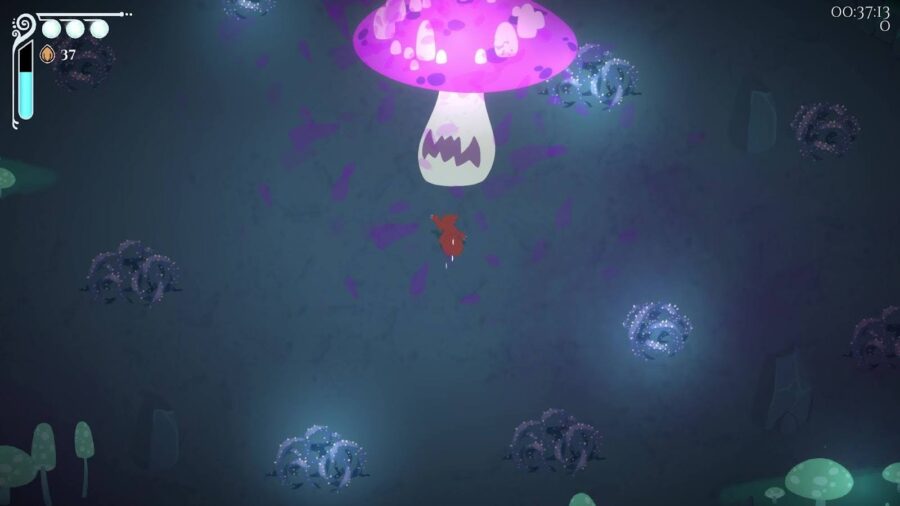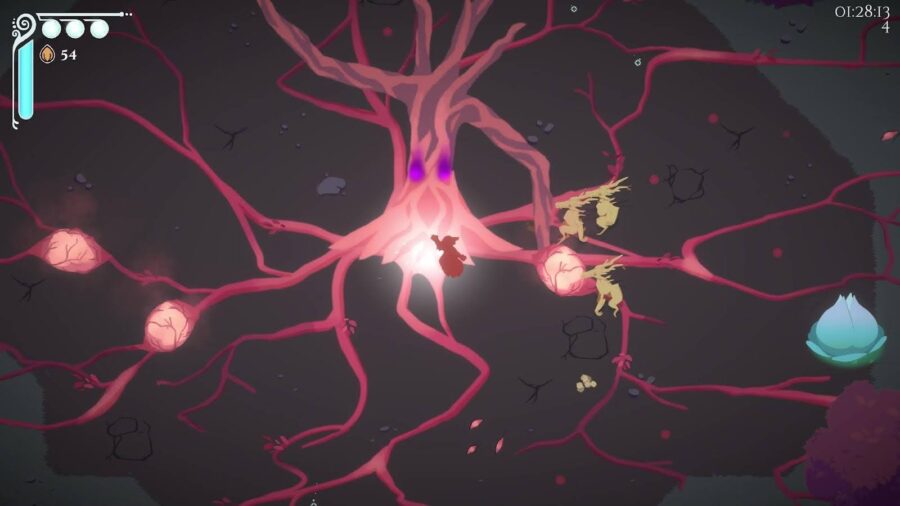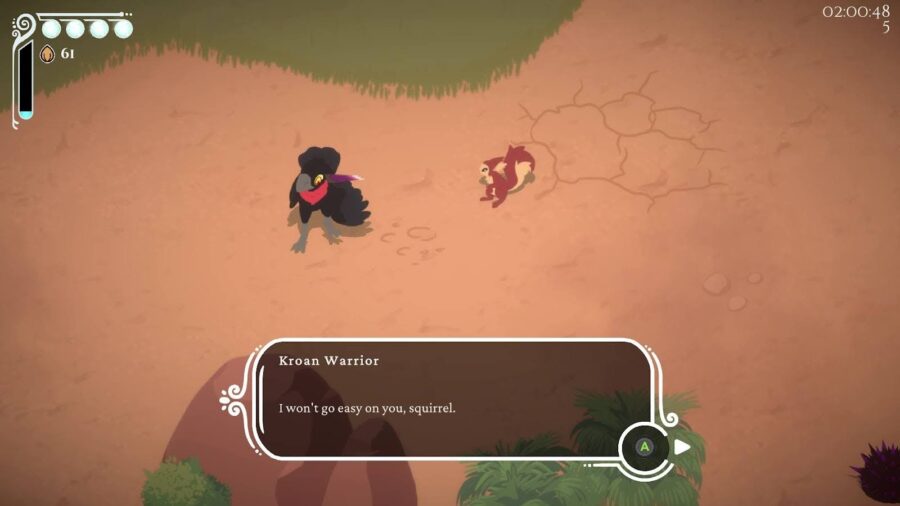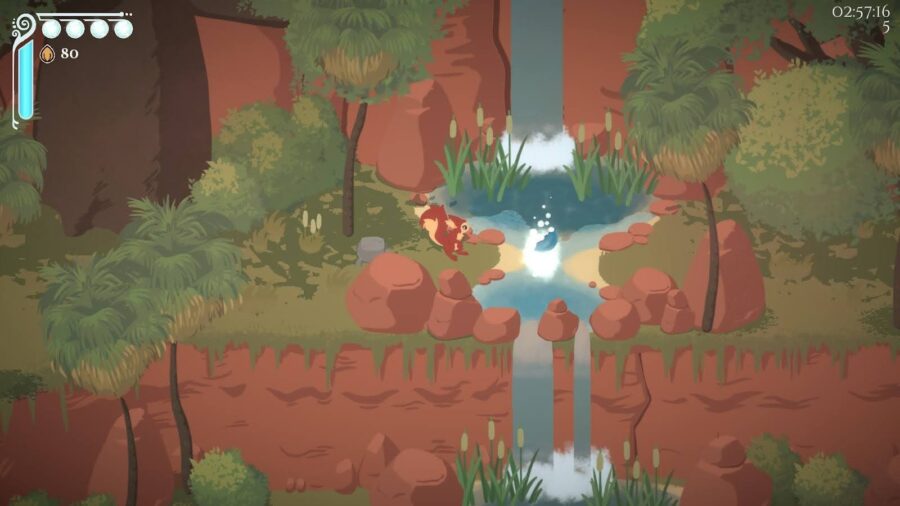Video games, both on the hobbyist and business ends,tend to get caught up in buzzwords. This medium had marketers before it had actual writers and now much of the attached language quickly cycles into meaninglessness. Nothing is ever just challenging when it could be a “Soulslike,” and everything that’s meant to be even marginally relaxing/wholesome/thoughtful is now “cozy.”
Case in point: The Sacred Acorn bills itself as a “cozy Souls-like” on its Steam page, which strikes me as two aspects that would work at cross purposes.
It’s also not a particularly accurate description. Sacred Acorn is tough, but it looks and plays like Don Bluth made a clone of the original Legend of Zelda. It’s only a Soulslike if you assume the term is just a synonym for “difficult.”
You play The Sacred Acorn as Ima, a squirrel from the village of Timberglaive, which has been protected by its guardian spirit for as long as anyone can remember. When that guardian suddenly goes mad, Ima is simultaneously endowed with a mysterious power. It’s now up to her to defend what’s left of Timberglaive from the corruption that threatens it.
That’s what made me initially take umbrage with the “cozy” label, by the way. Sacred Acorn’s adorable squirrel heroine and her colorful forest are both only surface elements of what turns out to be a fairly dark story, especially once you’ve beaten the third boss. It may look like a children’s book, but it’s about as close as I ever expect to come to a video game adaptation of Watership Down.

Ima’s initial abilities are limited to a one-two punch combo and a channeled healing spell. As you explore the forest, deal with its newly corrupted inhabitants, and unravel its secrets, you gradually unlock more tools for Ima, including a dodge roll that can also carry her over low obstacles, a long-range magical attack, and a couple of different companions, including a cheerful turtle cartographer who functions as your minimap.
It’s all fairly accessible and colorful, although Ima only has 3 HP at the start of the game, so any fight can kill you if you aren’t careful. You also won’t get more HP for quite a while, and by the time you do, you also start running into more enemies that can inflict 2 damage at once.
Sacred Acorn is the sort of game where your first encounter with any given enemy is a frantic rush to figure out its attack pattern, because the only way to stay alive is to exploit its weaknesses. Ima’s almost always the fastest thing on the screen, so it’s easy to stay alive, but everything in Sacred Acorn has some way to punish you if you simply get up in their face.
You also have to stand still for a few seconds in order to heal, which isn’t easy. Bosses in particular are designed to make it difficult for you to carve out a chance to use your healing spell, and you usually have to give up offensive opportunities to do it. If there’s one thing about this game that I’d compare to a Soulslike, it’s that constant stick-and-move.

Even once Ima’s got a few more HP under her belt, every incidental fight keeps you on a razor’s edge, to the point where it’s often not worth the hassle to engage with an enemy at all. It reminds me of the old challenge runs that you used to see for the original Zelda, where people would try to beat the game without ever picking up an additional Heart Container or the sword upgrades.
Unfortunately, Sacred Acorn is more stingy about its offensive upgrades, which can be a problem in the mid-game. Many of the standard enemies have a lot of health, so every fight goes for about twice as long as it feels like it should. Things improve once you unlock the Essence Blast, which gives Ima some much-needed ranged firepower, but every new area comes with a host of enemies that are even harder to fight.
Finally, Sacred Acorn makes an interesting narrative decision at about its halfway point that also works to turn up the challenge. Without spoilers, the game starts in a fairly textbook place for a fantasy story, where Ima is given some tasks by speaking with her fellow villagers in Timberglaive. However, once you reach a certain point in the story, nobody actually knows what’s going on anymore, so no one has any direction to offer you.
It’s a fun twist on an old concept. It takes a while, but Sacred Acorn eventually cuts you loose and asks you to figure out your next steps by yourself. It’s a 5-hour game with a 2-hour tutorial and the rest is one big sandbox. I appreciate that, although I did end up running in circles for a while before I figured out what I was supposed to do next.

As much as I like that swerve, Sacred Acorn could use maybe one more QA pass before I’d actually recommend it. Its collision detection is occasionally dodgy, like how it’ll sometimes take me 3 tries to collect an enemy drop before the game decides I am in fact standing on it.
In addition, the controls are a little loose. Sometimes Ima simply fails to dash or attack when I hit the appropriate button. For a game that lives and dies on split-second actions, it’s not as tightly wound as it needs to be.
The Sacred Acorn is a decent short action/adventure game that’s made some weird marketing choices. It’s got an all-ages vibe and immediately accessible gameplay, but the difficulty spikes hard early on and just keeps going up. It’s a good example of a modern game that’s effectively building on some old foundations, and is worth a look for anybody who’s up for an old-school sort of challenge.



